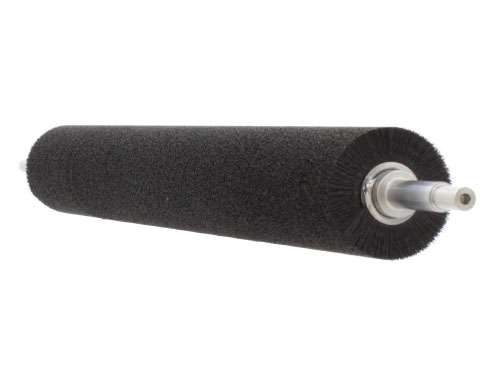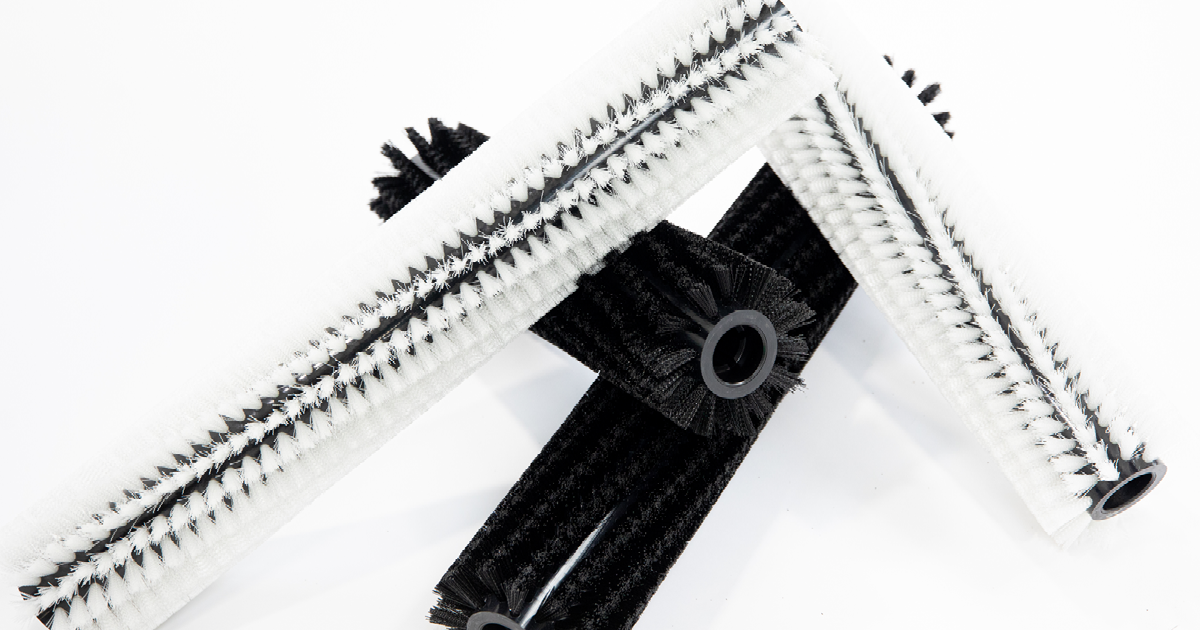If you’ve wondered how best to use this rolling-bristle wonder, you’re in the right place. This guide will unravel the step-by-step process, ensuring you maximize the benefits of your cylinder brush. Whether you aim to clean, scrub, or brush surfaces, understanding the proper technique is crucial. Let’s see in detail and get brushing efficiently!
What is a cylinder brush?
A cylinder brush is a versatile tool with bristles wrapped around a cylindrical core. Imagine a rolling pin covered in bristles; that’s its shape! People use it for various tasks, from cleaning to industrial applications. The bristles can be soft or hard, depending on the purpose. For example, soft bristles might clean delicate surfaces, while hard ones tackle tough dirt. Cylinder brushes come in many sizes, fitting various machines and hand tools. When you need even cleaning or brushing across a surface, a cylinder brush works wonders.

5 benefits of cylinder brush
Effective and Even Cleaning
Cylinder brushes stand out due to their unique shape. Like a rolling pin covered in bristles, they provide consistent coverage. When you roll or move the brush over a surface, it cleans or brushes uniformly. This ensures that no spot gets missed or over-cleaned. Think about scrubbing a conveyor belt or a large floor area. A cylinder brush will do the job with even precision.
Versatility in Applications
One of the most remarkable things about cylinder brushes is their versatility. They’re not just for cleaning! Industries often use them for deburring, polishing, or even spreading. Imagine trying to spread a layer of glue on a surface evenly. A flat brush might leave behind streaks or uneven spots. But a cylinder brush, with its continuous rolling action, spreads materials consistently. From food processing plants to woodworking workshops, these brushes prove useful in many settings.
Customizable Bristle Options
Everyone has unique needs, and cylinder brushes understand that. They come with different bristle types. You can find soft bristles for delicate tasks and harder bristles for heavy-duty jobs. Let’s say you’re cleaning a sensitive surface, like a glass panel or a polished tabletop. A soft-bristled cylinder brush will gently whisk away dirt without causing scratches. On the other hand, for rugged surfaces or stubborn dirt, stiff bristles will work wonders.
Durability and Longevity
Cylinder brushes are built for repeated and rigorous use. They usually have a sturdy core, around which the bristles wrap securely. This core often consists of materials like wood, plastic, or metal, providing the brush with a strong backbone. Because of this robust design, they last longer than many other brushes. Even in high-friction applications, these brushes maintain their shape and effectiveness. So, investing in a good cylinder brush means you’re getting a tool that’ll serve you well for a long time.
Efficiency in Time and Effort
Time is precious, and so is our energy. Cylinder brushes recognize this. Their design allows for quicker completion of tasks. If you’re brushing a large surface, the cylindrical shape covers more area in one go. This means fewer passes and less time spent on the job. Additionally, the rolling action minimizes the effort needed. Instead of repeatedly pushing down or scrubbing back and forth, you can let the brush roll and do its magic. This not only speeds up the process but also reduces fatigue.
How to use a cylinder brush?
Cylinder brushes, with their rolling-pin shape covered in bristles, are incredibly versatile tools. They offer uniform cleaning, brushing, and even spreading of materials. If you’ve just gotten your hands on one, or are considering how best to use it, this guide is for you. Get started on the step-by-step process of using a cylinder brush effectively.
1. Understand Your Task
Before using any tool, clarity is crucial. Ask yourself: What’s the goal? Are you cleaning, brushing, spreading, or doing something else? Your task determines the brush type, bristle strength, and technique.
2. Choose the Right Brush
Cylinder brushes come with different bristle types. Soft bristles work for delicate surfaces, while hard ones are for rigorous scrubbing. For example, a glass surface needs a gentler touch than a concrete floor. Pick the brush that suits your task best.
3. Prepare the Surface
Make sure the surface is free from any large debris or obstructions. You want the brush to glide smoothly. If cleaning a floor, sweep away large particles first. For machines or conveyors, ensure they’re switched off and safe to clean.
4. Set Up Your Cylinder Brush
If you’re using a machine-operated cylinder brush, attach it correctly. For manual brushes, ensure the handle or grip is secure. You don’t want any surprises halfway through the task.
5. Test a Small Area
Before diving into the entire surface, test a small, inconspicuous area first. This helps you understand the brush’s effectiveness and ensures the bristles won’t damage the surface.
6. Start from One End
Whether you’re cleaning a floor or brushing a conveyor, always start from one end. This systematic approach ensures you cover the entire surface evenly, without missing spots or overdoing certain areas.
7. Apply Moderate Pressure
Hold the brush firmly and apply moderate pressure as you move it. Too much pressure might damage the surface or wear out the brush quickly. Too little, and you might not clean effectively.
8. Roll or Move in a Consistent Direction
For even results, move the brush consistently in one direction. If you’re brushing a floor, go from one end to the other without zigzagging. For cylindrical objects, rotate them as you brush along their length.
9. Overlap Your Strokes
To ensure you don’t miss any spots, slightly overlap your brush strokes or paths. Think of it like mowing a lawn; overlapping ensures complete coverage.
10. Regularly Check Your Brush
As you proceed, stop occasionally and inspect the brush. Look out for trapped debris, excessive wear, or any damage. A quick shake or tap can help release trapped particles.
11. Adjust Technique if Necessary
Based on your observations, adjust your technique. If you notice streaks or missed spots, you might need to apply more pressure or slow down your brushing.
12. Clean the Brush After Use
Once done, it’s essential to clean the brush. Remove any trapped particles. For a deep clean, you can rinse it under running water, using mild soap if necessary. Ensure you dry it thoroughly before storing it.

13. Store Properly
Always store your cylinder brush in a dry place, away from direct sunlight. This ensures the bristles remain in good condition and prolongs the brush’s life.
14. Regularly Inspect for Wear
Over time, even the best brushes wear out. Regularly inspect yours for signs of excessive wear, fraying, or damage. If you notice any issues, consider replacing them to ensure effective and safe use.
15. Remember Safety
Safety first! If you’re using a cylinder brush on machinery or in industrial settings, always follow safety guidelines. Wear appropriate protective gear, like gloves or safety glasses, if necessary.
Wrapping Up
Using a cylinder brush might seem straightforward, but following these steps ensures you get the best results while preserving your brush’s condition. Whether you’re a newbie or a seasoned pro, a systematic approach always yields better outcomes. So, the next time you pick up that cylinder brush, you’ll know just how to make the most of it.
